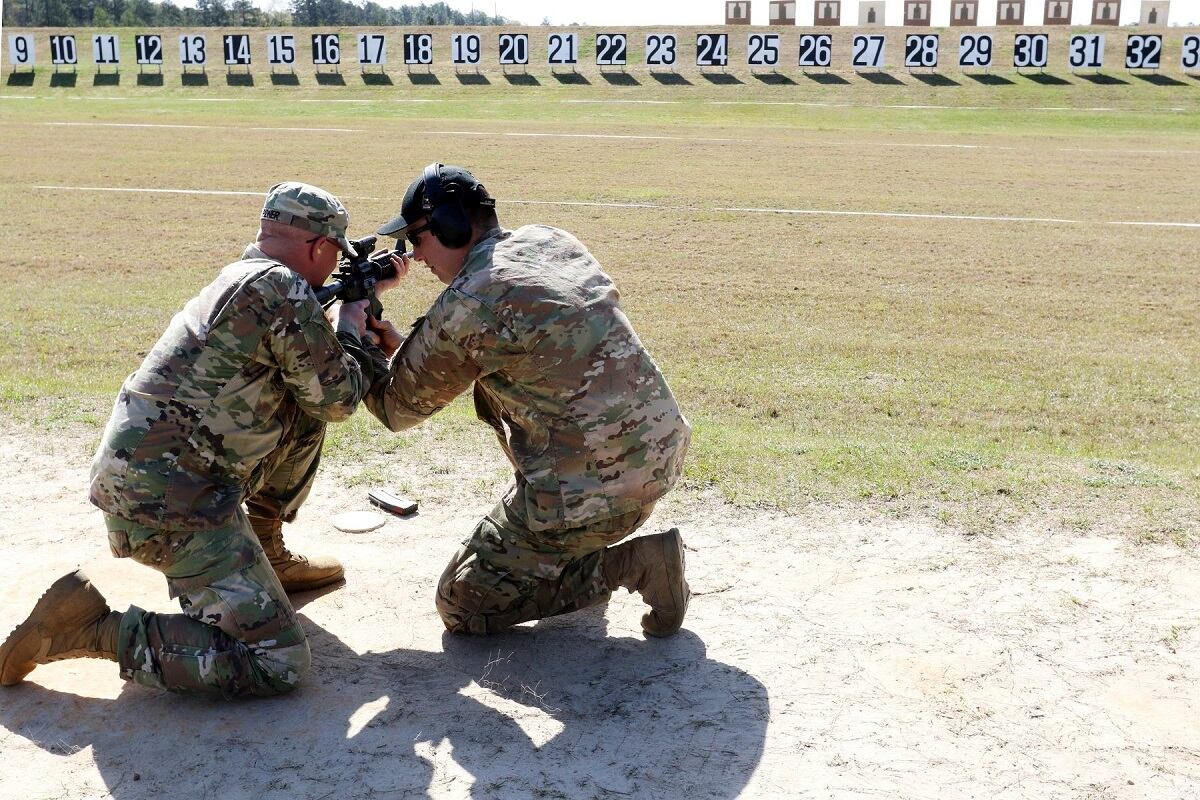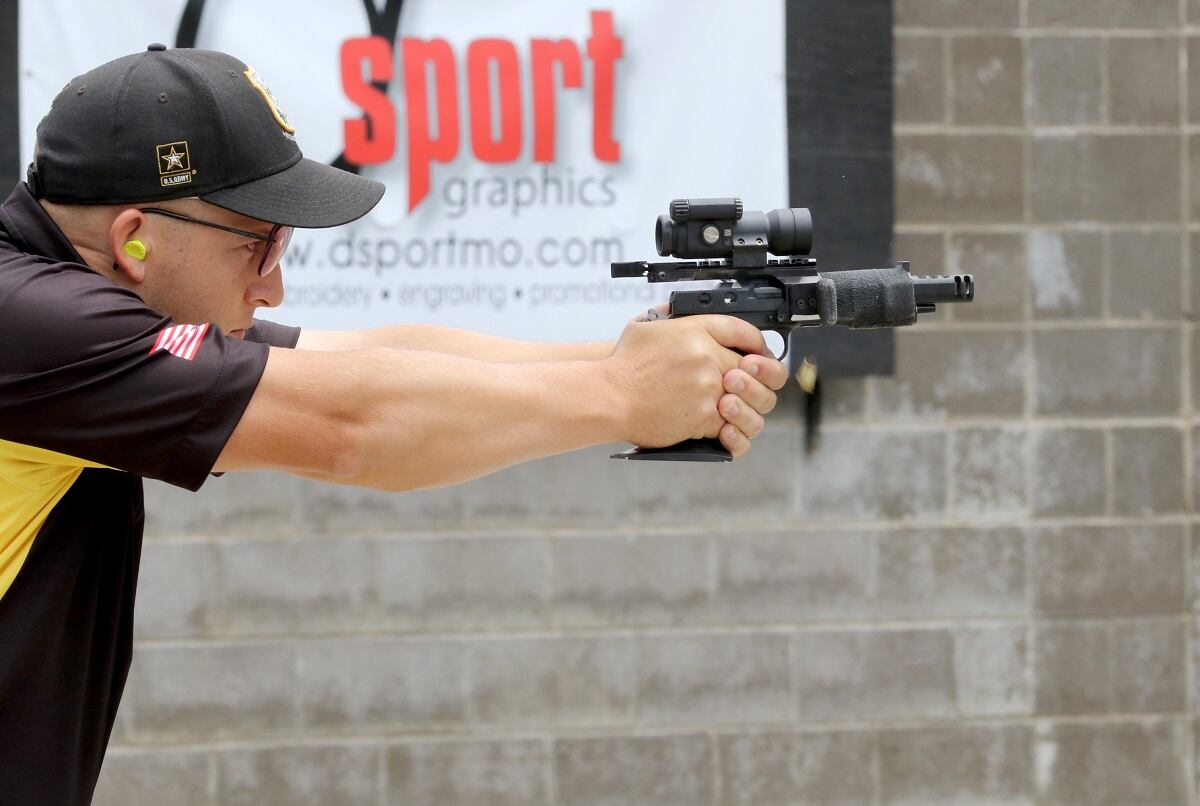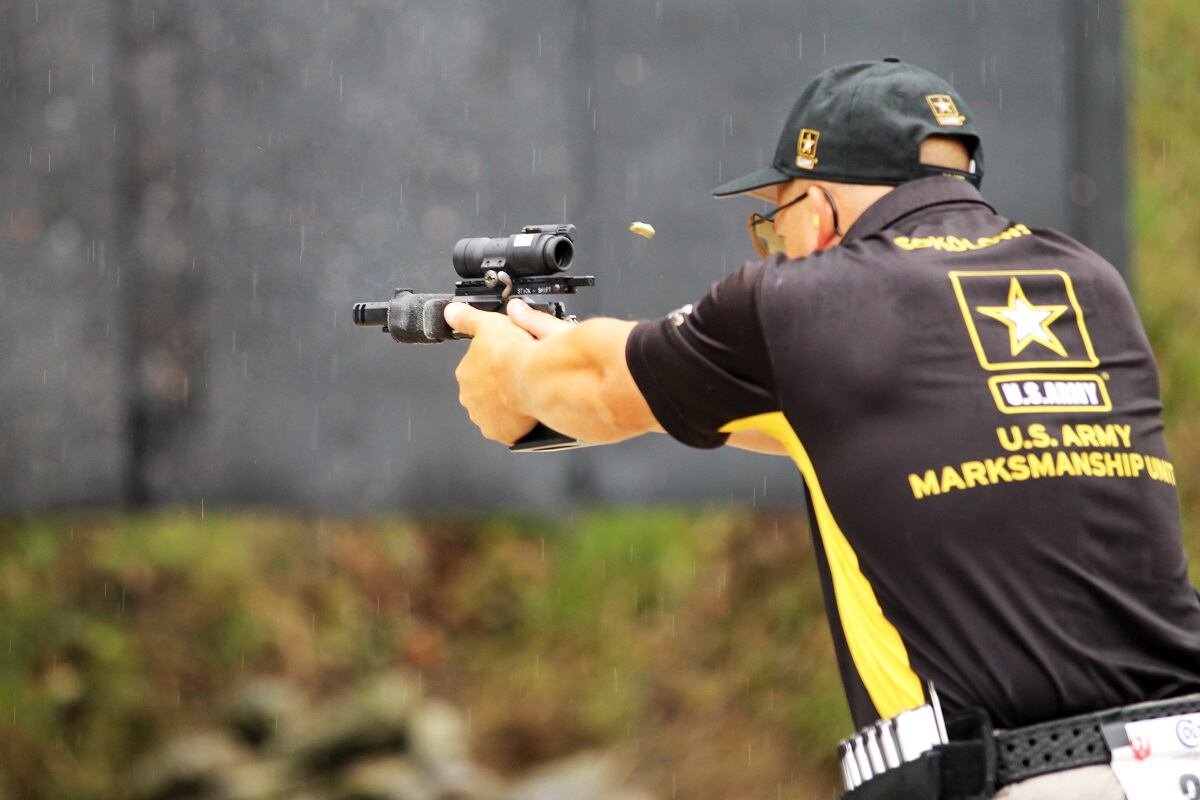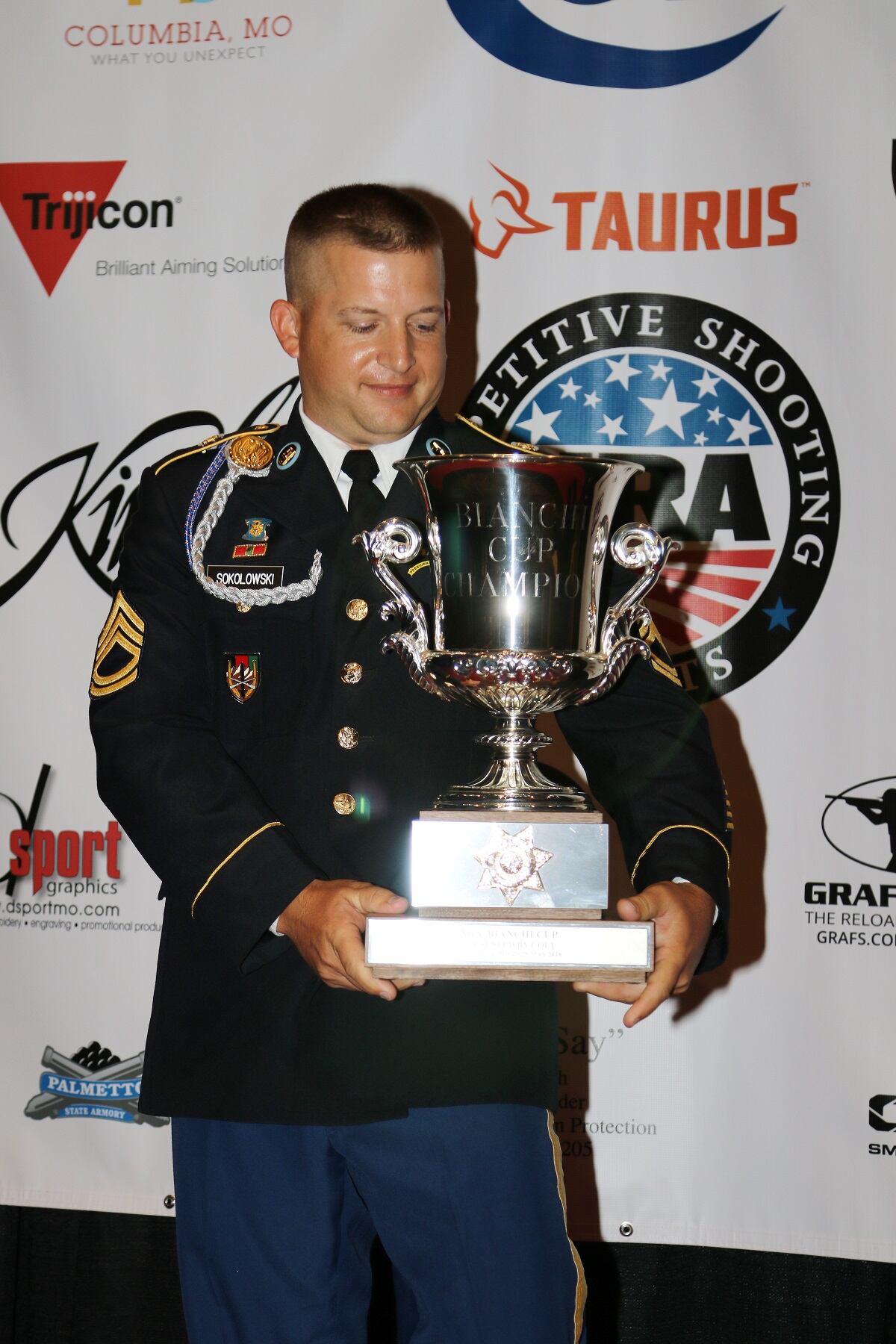A top Army shooter who recently made history in the premiere action pistol shooting competition has a simple tip for handgun marksmanship that doesn’t require bullets – dry fire until you can achieve ideal trigger control.
Sgt. 1st Class Adam Sokolowski, 39, has shot competitively since he was 12 years old but first entered the National Rifle Association National Action Pistol Championship, known as the Bianchi Cup, in 2015.
Since then he has won the production division, the metallic division and this year the open division. He’s the first shooter to claim each division in three consecutive years in the 40-year history of the competition.
Oh, and last year, when he shot the metallic sights division, he shot the first-ever perfect score.
RELATED

The course of fire for the competition includes a practical event, barricade event, falling plate event and moving target event.
Sokolowski didn’t begin shooting this specific competition because, since shortly after graduating from Indian Valley High School in Lewistown, Pennsylvania, he enlisted in Army infantry and quickly found himself busting caps for the Army Marksmanship Unit.
And until just a few years ago, the AMU didn’t compete in the Bianchi Cup.

He’s spent his nearly 20-year career with AMU at Fort Benning, Georgia, and focused his efforts on Bullseye pistols shooting, a precision-accuracy type of shooting done with one hand.
That’s the kind of shooting his father Frank Sokolowski got him and the sergeant’s siblings involved with at an early age. And it’s the kind of shooting that got AMU staff to first notice a teenage Sokolowski while he was plinking away at targets at the renowned Camp Perry, Ohio shooting matches.
His father first introduced the junior Sokolowski to shooting with a Smith & Wesson .22 LR pistol, a far cry from the custom-built 1911 Colt 9mm he shot for the most recent competition.
But the Smith & Wesson is the same pistol that he taught his son, Joena, 15, to shoot with.
About halfway into his career so far, Sokolowski nearly saw it end.
He noticed his “arc of movement” or how much the pistol was moving as he held it out, was growing. What would be a normal arc, say 3 inches, had widened to as much as 8 inches. Also, there was the pain.
After trying to push through it by doing more shooting work and exercises rather than less, a doctor told him he had tendinitis and he might have to give up the sport.
Instead, he did something no top-level shooter wants to do – he switched hands.
Over months of reconditioning himself, Sokolowski shifted from a right-handed to left-handed shooting.
Luckily with time, he recuperated enough to return to his dominant hand and when he did more of the action shooting, which is two-handed, the problem didn’t affect him as much.

Heading into this year’s competition, which was held in late May, the sergeant was aware that he had a chance to make history.
He just didn’t let it get into his head.
The best way to understand how the shooting matches work is to think of golf tournaments – multiple competitors, aiming for the best score on the same course over multiple days.
It’s easy to psyche yourself out by watching other shooters’ scores and realizing that’s where the bar has been set.

But Sokolowski took a different approach, doing what he tries to always do – individualized training such as dry fire drills, followed by record days in which AMU shooters go through the same sequence of shooting events as the match they’re about to compete, which helps gauge where they’re at, score wise.
The team shoots five to six action pistol matches a year, so he had a good idea of where his scores were. They were good enough going in to place, but not to guarantee victory.
As he progressed through each stage he had an idea he was in the running. Then, on the last event, it started to rain.
Now, that’s not a big deal in the metallic sights division. But when you’re shooting with an optic and laser, one bad raindrop landing can make that pinpoint laser dot smudge and fill the entire scope with red light, rendering it worthless for precision shooting at high speeds.
So Sokolowski used a plastic Gatorade bottle cap to keep the scope dry while he waited to shoot and added a small cleaning cloth to dry the gun and his hands to his normal routine of “Shoot-reload-holster-think about what I do-reset.”
“It was nerve-wracking but I knew if I just followed my plan, kept my hands as dry as best I can I could do it,” he said.
At the end of that last stage, he realized he’d shot all 48 plates … and that he’d won.
A short while later he called his dad to tell him he’d won.
“He was ecstatic, he tracks the scores so he probably knows how I’m doing better than I do,” he said.
But his dad, ever the diehard for accuracy, will still ask how that two-handed action pistol shooting is affecting his son’s single-hand Bullseye shooting style.
Sokolowski’s shooting tips:
Try the old-school dime and washer drills, those where a shooter places the items on the gun end of the pistol, sight in the target and squeeze the trigger in a dry fire, trying to ensure the dime doesn’t drop. This helps the shooter work on holding steady through the trigger pull.
A technology-updated way to measure that is to take a 3-by-5-inch index card, draw a line on the card and place it a close distance from the muzzle of the pistol. When using a red dot sight, the shooter would again dry fire the weapon, noticing where the dot goes as he or she squeezes.
“If you move a lot, that’s going to cause issues,” Sokolowski said. “That drill pays major dividends as compare to shooting 400 to 500 rounds at the range.”
Bianchi Cup shooting events:
- Practical Event: From the appropriate shooting line, the shooter fires at distances from 10 yards to 50 yards under varying time limits.
- Barricade Event: From within shooting boxes and behind barricades, a shooter fires at targets on either side of the barricade at different distances and under varying time limits.
- Falling Plate Event: From the appropriate shooting line, the shooter fires at 8-inch round steel plates arranged in banks of six at distances from 10 to 25 yards under varying time limits.
- Moving Target Event: From within shooting boxes at distances ranging from 10 to 25 yards, the shooter fires at a target moving from left to right with the target being exposed for only 6 seconds.
Todd South has written about crime, courts, government and the military for multiple publications since 2004 and was named a 2014 Pulitzer finalist for a co-written project on witness intimidation. Todd is a Marine veteran of the Iraq War.




